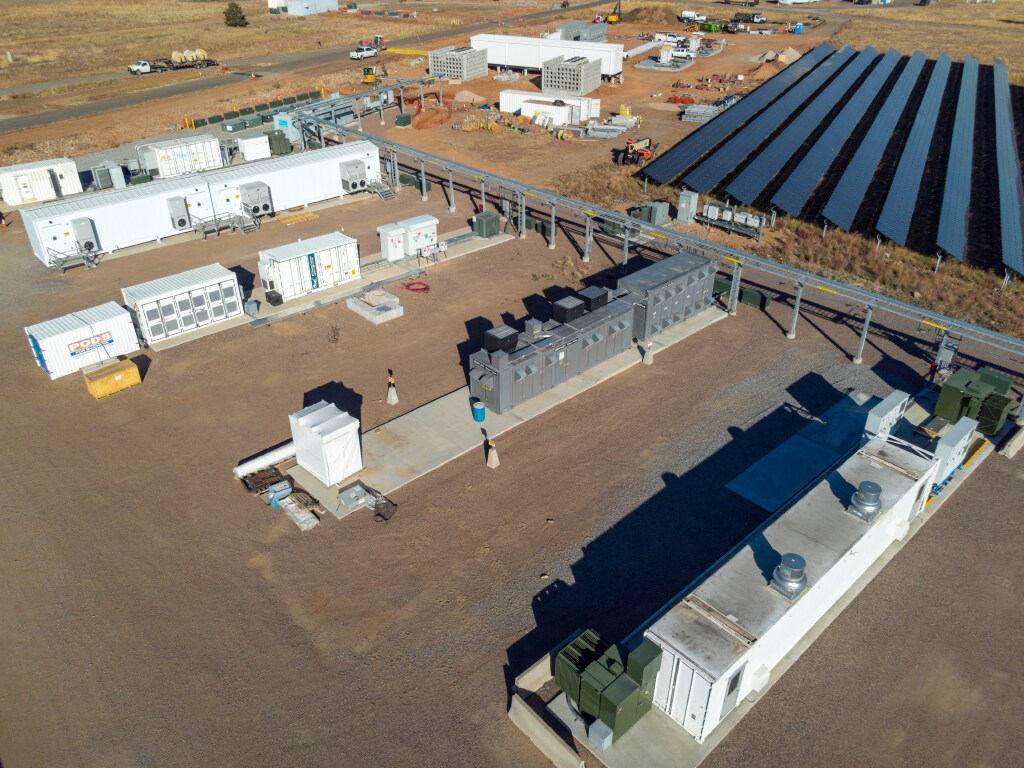 The ARIES platform is based on NREL's Colorado campus. Credit: NREL/Josh Bauer / Bryan Bechtold
The ARIES platform is based on NREL's Colorado campus. Credit: NREL/Josh Bauer / Bryan BechtoldThe far-flung virtual power plant was part of a national research and development project to remotely connect energy assets in real-time using the Department of Energy’s Energy Sciences Network (ESnet).
The researchers linked capabilities at the National Renewable Energy Laboratory (NREL) in Colorado and the Idaho National Laboratory (INL) to create an environment that allowed them to study energy systems currently not in existence.
The researchers said they demonstrated that renewable and nuclear energy, combined within a hybrid system, can complement each other to support the grid.
“Integrating nuclear assets deployed at INL and connecting them with renewable energy assets at NREL showcases the power of energy hybridization technology and underscores the importance of connectivity in achieving sustainable energy solutions,” said Rob Hovsapian, ARIES research lead in hybrid energy systems at NREL.
Test design
At NREL, the Advanced Research on Integrated Energy Systems (ARIES) platform provided a solar array, battery storage system, hydrogen fuel electrolyzer, and a controllable grid interface. Digital real-time simulators enabled researchers to connect the models as well as the responses on both NREL and INL sides.
At INL, researchers ran simulations of a small modular nuclear reactor and high-temperature electrolysis in the lab’s Human Systems Simulation Laboratory.
ESnet-operated fiber-optic cabling provided high-speed, low-latency, and low-jitter data connections between the two laboratories. The connection synchronized simulations and control signals, providing what was labeled “virtual proximity” of the assets.
The researchers said their work showed that nuclear power and renewables could be used in combination for the electric grid. For an extra-functional design, the researchers added hydrogen electrolyzers and thermal batteries to store excess power.
The hybrid plant helped ensure that grid demands were met while also taking advantage of the heat provided by a nuclear thermal generator to produce clean hydrogen.
During the demonstration, the researchers simulated a sudden loss in solar power from a passing cloud, and the nuclear reactor stepped in to support grid demand. Then, when they simulated a storm knocking out neighborhood power lines, the nuclear reactor ramped down its power to the grid and redirected it to increase hydrogen production and storage. These scenarios provided data for how hybrid renewables-nuclear designs might operate.
Proof of concept
In 2017, eight laboratories connected for the first demo using virtual private network connections. It was largely considered a successful proof of concept. But varying latency made it difficult to co-simulate power signals requiring millisecond sensitivity.
The ESnet team reduced latency variance, bringing it down from 11.5 milliseconds to 0.02 milliseconds, which proved useful in 2021 when another demonstration was created to support a remote Alaskan city.
During the most recent demonstration in January, the researchers made use of ESnet6, which features higher data capacity, real-time data visualization, and new automation and cybersecurity tools.
From its headquarters at Lawrence Berkeley National Laboratory, ESnet reaches research nodes that include several in Europe. It is intended to better enable laboratories to share supercomputers, particle reactors, and wind turbines, regardless of geographic location.
The next demonstration is expected to simulate a national-scale disaster across eight national laboratories. Researchers plan to study how a major outage from a hurricane or cyberattack would play out on a distributed energy system. And while the 2017 demo ran 80 devices, the upcoming demo, slated for late 2023, will aim for 10,000 devices.